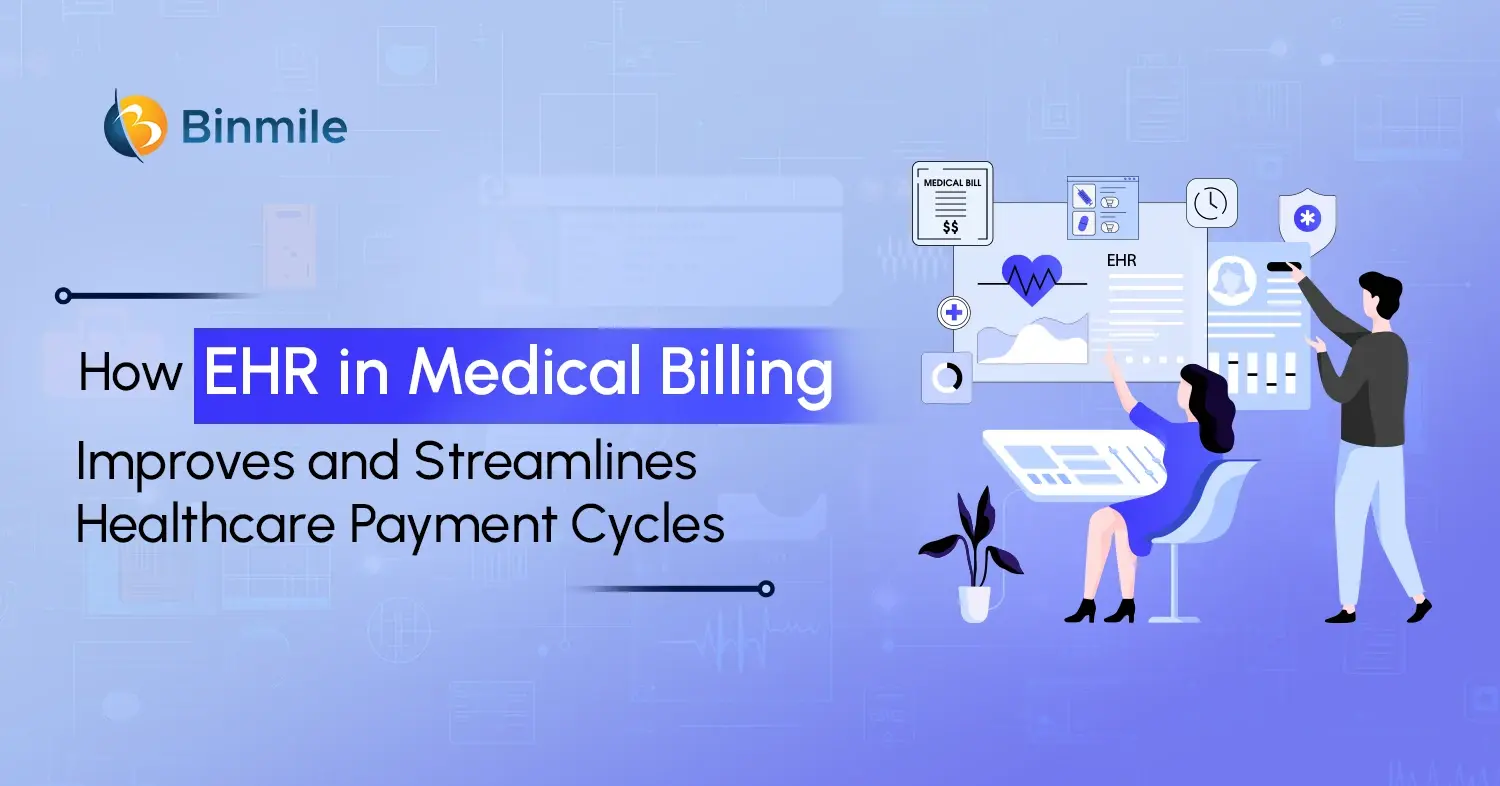Every business, no matter how big or little, strives to improve and speed up business operations while keeping great customer value. DevOps and Agile are two distinct but related approaches to software development and deployment that have become increasingly popular in recent years. By combining these two methods, organizations can achieve greater business performance.
DevOps engineering, followed by agile methods in software development, can aid a business in taking up new dimensions to existing as well as new development strategies. Agile and DevOps services can help a business reach new heights and increase efficiency, as teams are better able to collaborate and share resources.In this blog, we will explore what Agile DevOps is, its key benefits, how to integrate Agile and DevOps, the main challenges and its solutions, and some popular real-world examples.
What is Agile?
According to the 18th Annual State of Agile Report (2024), 77% of organizations report faster delivery speed as the primary benefit of Agile adoption, while 70% cite improved team collaboration. Agile software development is a methodology for creating software that focuses on sustainable development, collaboration between cross-functional teams, and adaptation to rapid changes in the business environment. With this, teams can develop a product incrementally over short cycles resulting in agile business transformation.
Agile is an iterative software development methodology that emphasizes:
- Incremental product delivery
- Collaboration among cross-functional teams
- Quick adaptation to changing business requirements
- Continuous customer feedback loops
By breaking projects into short, manageable sprints, Agile fosters transparency, flexibility, and faster releases. This methodology empowers businesses to respond to market changes and customer needs in real-time, enabling agile business transformation.
What is DevOps?
The DevOps market is projected to reach $25.5 billion by 2028, growing at a CAGR of 24.7%. DevOps software development is a DevOps methodology that promotes streamlined collaboration between developers, operations, and other IT professionals. It seeks to bring digital transformation throughout an organization by introducing an iterative process cycle of automation, integration, and testing. This DevOps development, as well as the effective measurement of processes, allows organizations to improve their business strategies while creating value equally and, in many cases, increasing efficiency and productivity.
DevOps is a cultural and technical shift that bridges the gap between development (Dev) and operations (Ops). It focuses on:
- Continuous Integration and Continuous Delivery (CI/CD)
- Automation of deployment and infrastructure
- Real-time performance monitoring
- Cross-functional collaboration
DevOps digital transformation allows businesses to deliver software faster, reduce downtime, and improve product quality. By dismantling traditional silos, it promotes a unified, scalable, and secure software delivery pipeline.
What is Agile DevOps?
Agile DevOps is a synergistic approach that combines the iterative, flexible development practices of Agile with the automation, continuous integration, and delivery focus of DevOps. This integration enables organizations to deliver high-quality software faster and more reliably by fostering collaboration between development, operations, and business teams throughout the software lifecycle.
By blending Agile’s rapid feedback cycles and adaptability with DevOps’ automation and operational stability, Agile DevOps creates a seamless pipeline from idea to production. This leads to improved product quality, faster time to market, and enhanced customer satisfaction.
How DevOps and Agile Services Improve Business Performance: Key Benefits
Combining Agile and DevOps enables businesses to streamline development and operations through better collaboration, automation, and faster feedback cycles. This integration drives efficiency, improves software quality, and accelerates time-to-market, helping organizations stay competitive in a rapidly evolving landscape.
1. Accelerated Software Delivery
By integrating Agile methodologies with DevOps automation, organizations can significantly shorten their software development lifecycle. CI/CD pipelines enable faster, more reliable releases, reducing time-to-market and improving deployment frequency.
2. Enhanced Collaboration and Communication
DevOps fosters a culture of collaboration by breaking down silos between development, operations, and QA teams. Combined with Agile’s iterative planning and feedback loops, this promotes transparency, shared accountability, and quicker resolution of issues.
3. Improved Quality and Continuous Testing
Agile’s focus on incremental development pairs seamlessly with DevOps practices like automated testing and infrastructure as code (IaC). This ensures consistent quality, early bug detection, and higher software reliability throughout the development lifecycle.
4. Increased Operational Efficiency
Automation of repetitive tasks such as code integration, testing, deployment, and monitoring reduces manual errors and frees teams to focus on innovation. This leads to better resource utilization and optimized workflows.
5. Data-Driven Decision Making
Real-time monitoring and analytics tools inherent to DevOps provide actionable insights into system performance and user behavior. Coupled with Agile retrospectives and sprint reviews, these data points enable continuous process improvement and risk mitigation.
6. Scalability and Flexibility
The combined Agile-DevOps approach supports scalable architectures and adaptive planning. Businesses can rapidly respond to market changes, customer feedback, and emerging opportunities, maintaining a competitive edge in a dynamic digital landscape.
7. Higher ROI and Customer Satisfaction
Faster delivery of high-quality products, improved reliability, and enhanced user experiences contribute to increased customer satisfaction. Simultaneously, organizations benefit from reduced operational costs and higher returns on investment.
How to Implement Agile and DevOps Together: A Step-by-Step Guide
Integrating Agile and DevOps practices allows organizations to accelerate software delivery while maintaining high quality and reliability. By combining Agile’s iterative development approach with DevOps’ automation and collaboration principles, teams can improve efficiency and respond faster to customer needs. The following steps outline how to implement these methodologies together effectively.
1: Align Mindsets and Culture
work closely together rather than in silos. Everyone should share responsibility for delivering high-quality software quickly and reliably. Leadership must actively support this cultural shift by encouraging open communication, experimentation, and learning from failures, creating an environment where continuous improvement is valued.
2: Integrate Agile with Automation
Agile teams should include DevOps-related activities like automation and infrastructure updates within their sprint planning and daily workflows. Establishing Continuous Integration and Continuous Delivery (CI/CD) pipelines is essential to automate the building, testing, and deployment of code. Agile ceremonies such as daily stand-ups and sprint reviews should incorporate discussions about DevOps tasks to ensure alignment and transparency.
3: Adopt Infrastructure as Code
Managing infrastructure through code rather than manual processes helps maintain consistency and repeatability across all environments. Teams use tools such as Terraform or Ansible to script server and network configurations. This infrastructure code is stored in version control alongside application code, enabling better tracking of changes and easier replication of environments for development, testing, and production.
4: Implement Continuous Testing
Automated testing is crucial for maintaining software quality and catching defects early. Tests spanning unit, integration, and user acceptance levels should be integrated into the CI/CD pipeline to run automatically on every code change. Encouraging developers to write tests early in the development process (“shift left”) ensures faster feedback and reduces costly fixes later in the cycle.
5: Measure Performance Metrics
Tracking key Agile and DevOps metrics provides insight into process effectiveness. Deployment frequency shows how often updates reach users, lead time measures the duration from code commit to deployment, and mean time to recovery reflects how quickly issues are resolved. Agile metrics like sprint velocity and burndown charts help teams monitor progress and workload. Analyzing these data points guides continuous process improvements.
6: Enhance Communication Tools
Effective collaboration requires integrated tools that support transparency and real-time communication. Agile task management platforms like Jira or Azure DevOps combined with GitHub or GitLab for version control keep work visible. Communication apps such as Slack or Microsoft Teams facilitate quick discussions, while documentation tools like Confluence provide a shared knowledge base. Dashboards displaying build, deployment, and sprint status maintain overall visibility.
7: Start Small, Scale Gradually
Launching Agile and DevOps integration with a pilot project reduces risk and allows teams to experiment with processes and tools. Feedback gathered through retrospectives informs refinements to workflows and automation. Once optimized, these practices can be scaled gradually to larger teams and projects, ensuring sustainable adoption and continuous improvement.
8: Establish Monitoring and Feedback
Continuous monitoring of applications and infrastructure enables early detection of issues using tools like Prometheus or Datadog. Automated alerts notify teams promptly, minimizing downtime. Operational data and customer feedback should be continuously fed into Agile backlogs, ensuring the product evolves based on real-world performance and user needs.
Common Challenges and Solutions in Agile-DevOps Integration
1. Cultural Resistance
Development and operations teams often work in silos, leading to communication gaps. Overcoming this requires leadership to promote a culture of collaboration and shared ownership through regular cross-team communication and transparency.
2. Tool and Process Integration
Agile and DevOps use different tools and workflows, making integration complex. Starting with pilot projects helps identify the best fit. Emphasizing automation and training ensures smoother adoption.
3. Defining Success Metrics
It can be difficult to choose metrics that reflect both Agile productivity and DevOps delivery speed. Establishing aligned KPIs such as deployment frequency, lead time, and sprint velocity early helps track progress effectively.
4. Balancing Speed and Quality
Accelerating delivery without compromising quality is challenging. Implementing continuous testing and shifting testing left in the development process helps catch defects early and maintain reliability.
Popular Example of Agile DevOps Integration
-
Netflix:
Netflix uses Agile to quickly develop new features by regularly updating their software based on user feedback. At the same time, their DevOps practices automate the process of testing and releasing these updates. This combination lets Netflix deploy thousands of updates every day without causing downtime, keeping their service reliable and competitive.
-
Etsy:
Etsy improved how their teams work together by combining Agile development with DevOps automation. Developers and operations collaborate closely, using automated testing and deployment tools to release code several times a day. This approach reduces errors, improves site stability, and speeds up delivering new features to customers.
-
Amazon:
Amazon breaks its large organization into small, Agile teams that work independently but follow common DevOps practices. By automating infrastructure and deployments, Amazon can safely release thousands of changes daily. This enables fast innovation and ensures customers have a smooth shopping experience worldwide.
Conclusion
DevOps and Agile are two important development methodologies that have helped modern businesses stay ahead of the competition. By integrating these, teams can experience a perfect flow of teamwork, leading to greater efficiency, productivity, and innovation. DevOps and Agile services also help organizations reduce their time to market and improve their overall customer experience and achieve greater business performance.
To fully leverage these benefits, partnering with an experienced Agile and DevOps services company can streamline your transformation journey. Binmile, emerging as one of the best agile consulting company, is a one-stop solution for all your software development needs. Binmile delivers analytical insights into streaming business workflows with absolute value propositions.
Ready to boost your software delivery and business performance? Contact us today to discover how tailored Agile DevOps solutions can help your organization stay ahead and deliver exceptional value.
Frequently Asked Questions
When combined with Agile and DevOps, Cloud Computing is the most effective technology. It enables faster deployments, better scalability, continuous integration and delivery (CI/CD), and improved collaboration, making software development more efficient and responsive to change.
DevOps and Agile services refer to modern software development practices that focus on faster delivery, collaboration, and continuous improvement. Agile ensures flexible, iterative development with constant feedback, while DevOps bridges the gap between development and operations, enabling automated testing, integration, and deployment. Together, they streamline workflows, reduce time-to-market, and enhance software quality.









